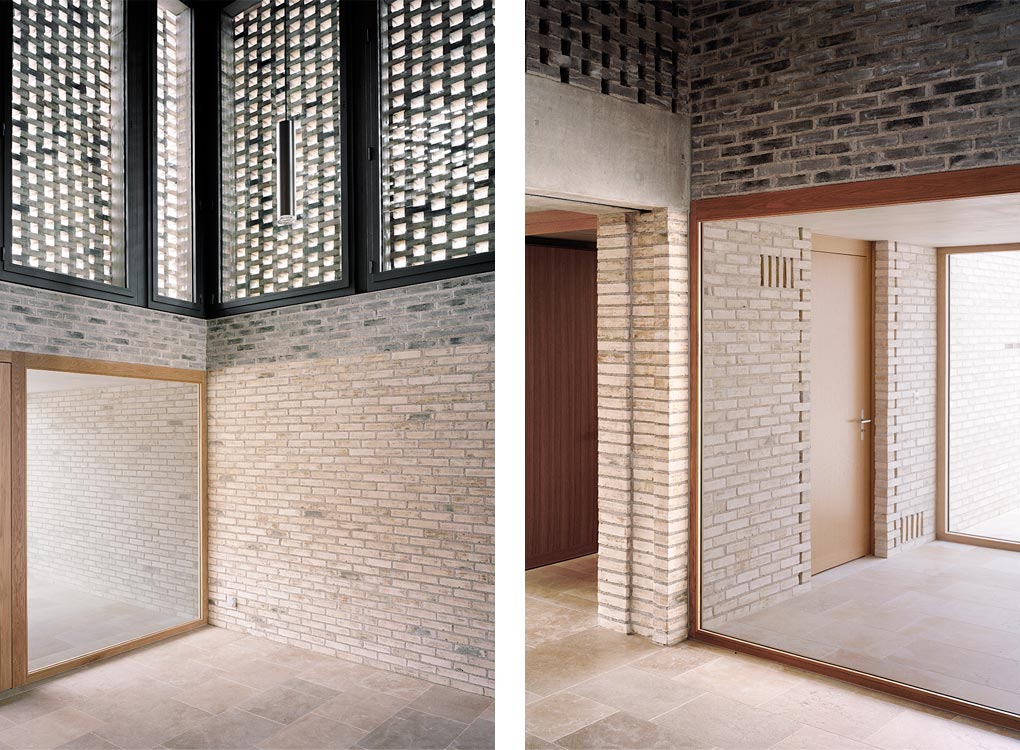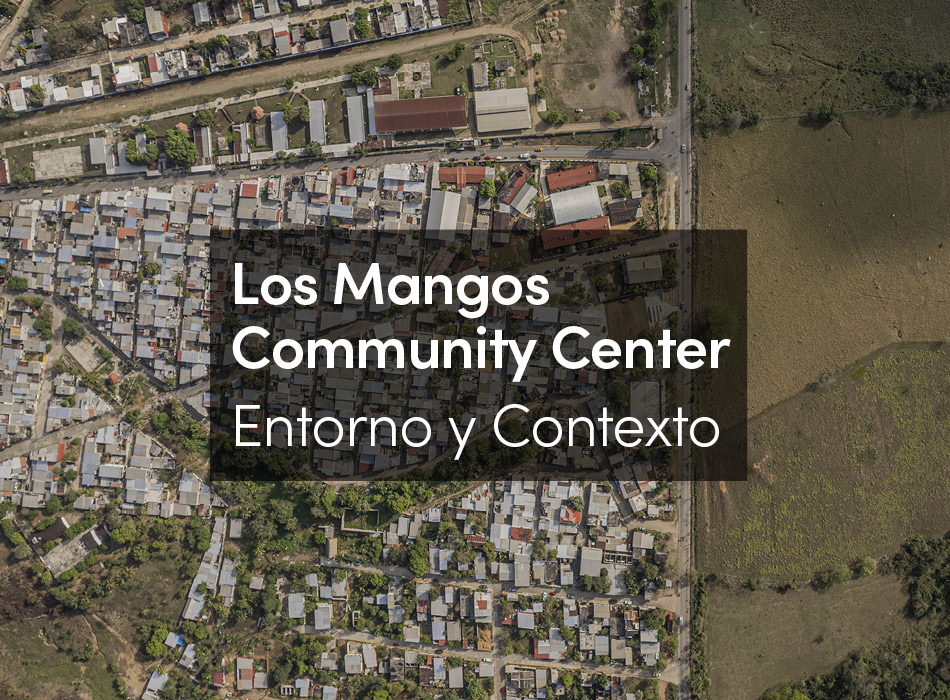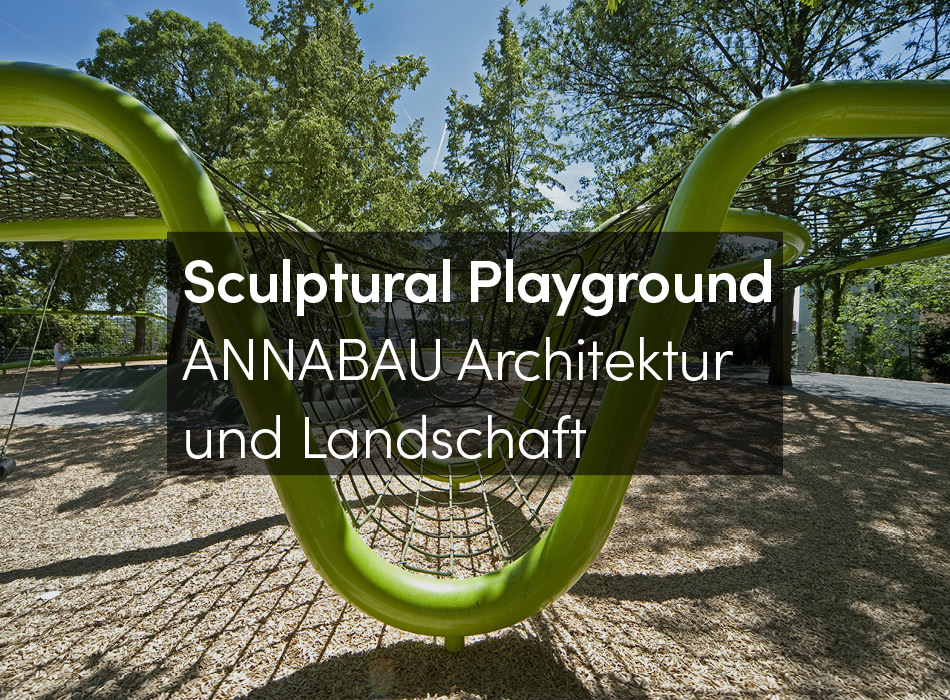Not far from the center of Basel, near the border with Germany and close to the Rhine River, lies Switzerland’s biggest cemetery. The so-called Hörnli is a place of mourning and devotion, but also a sensitive and precisely cultivated garden. It is also located on a border in a metaphorical sense: it is a multicultural place that reflects our being together before and after death.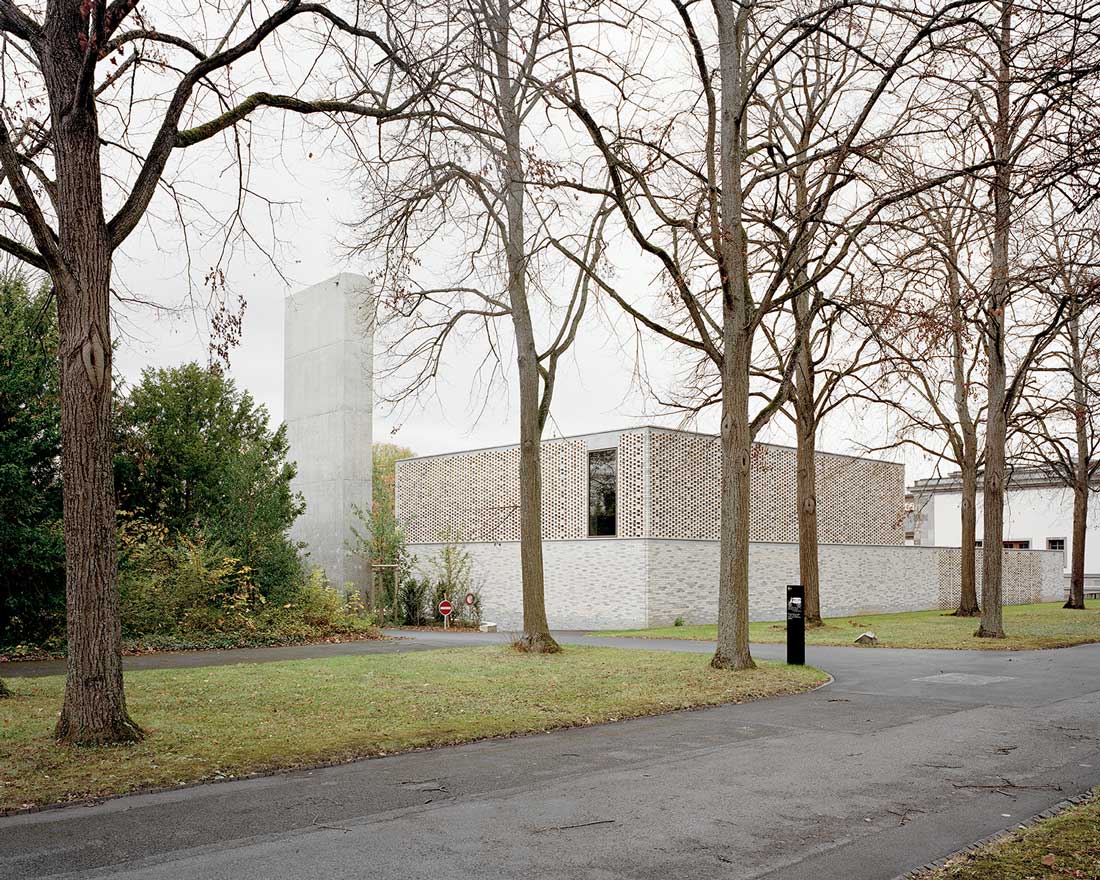
The cemetery was finished in the 1930s and its existing layout and buildings are shaped by a straight classical geometrical order embedded in nature. This urban layout provides consolation in the form of rationality and clarity. The new crematory, finished in mid 2017 subordinates itself to these found patterns. It forms a background for both the landscape and the act of saying farewell. It creates a solemn experience, ecumenical and easily accessible to all.
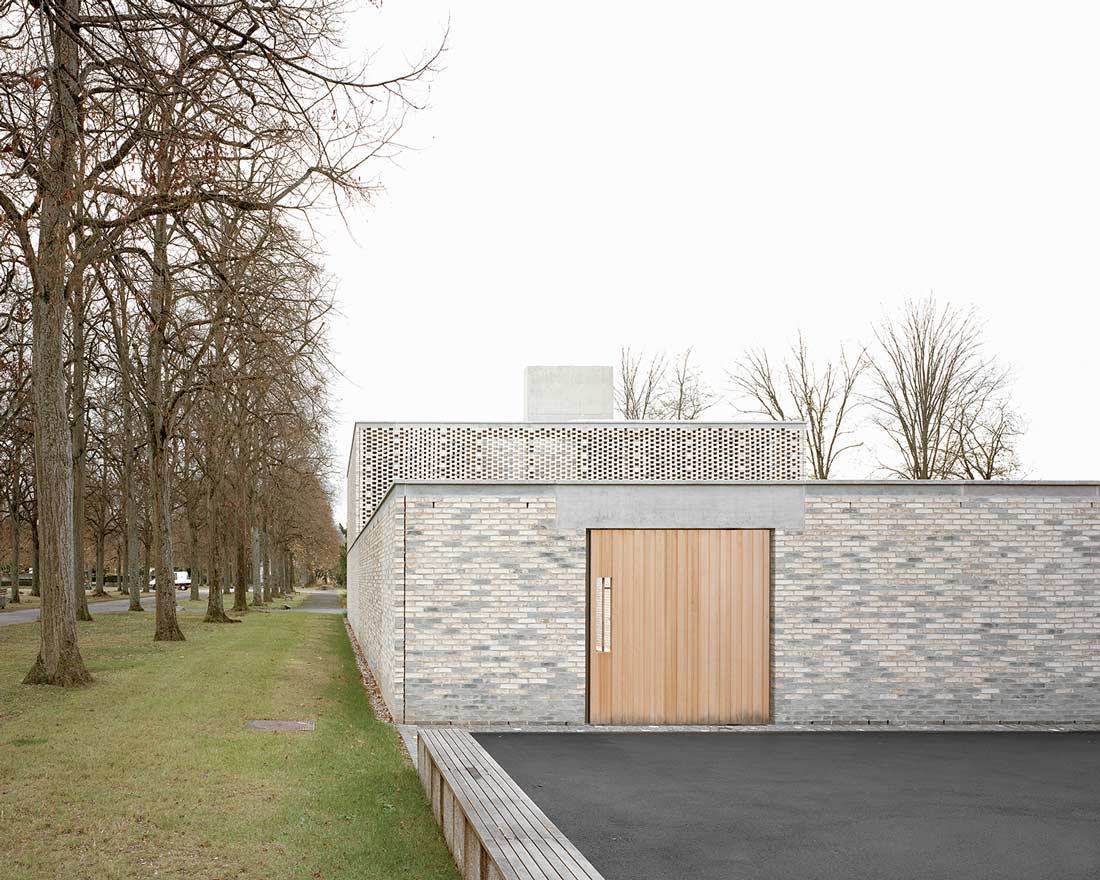
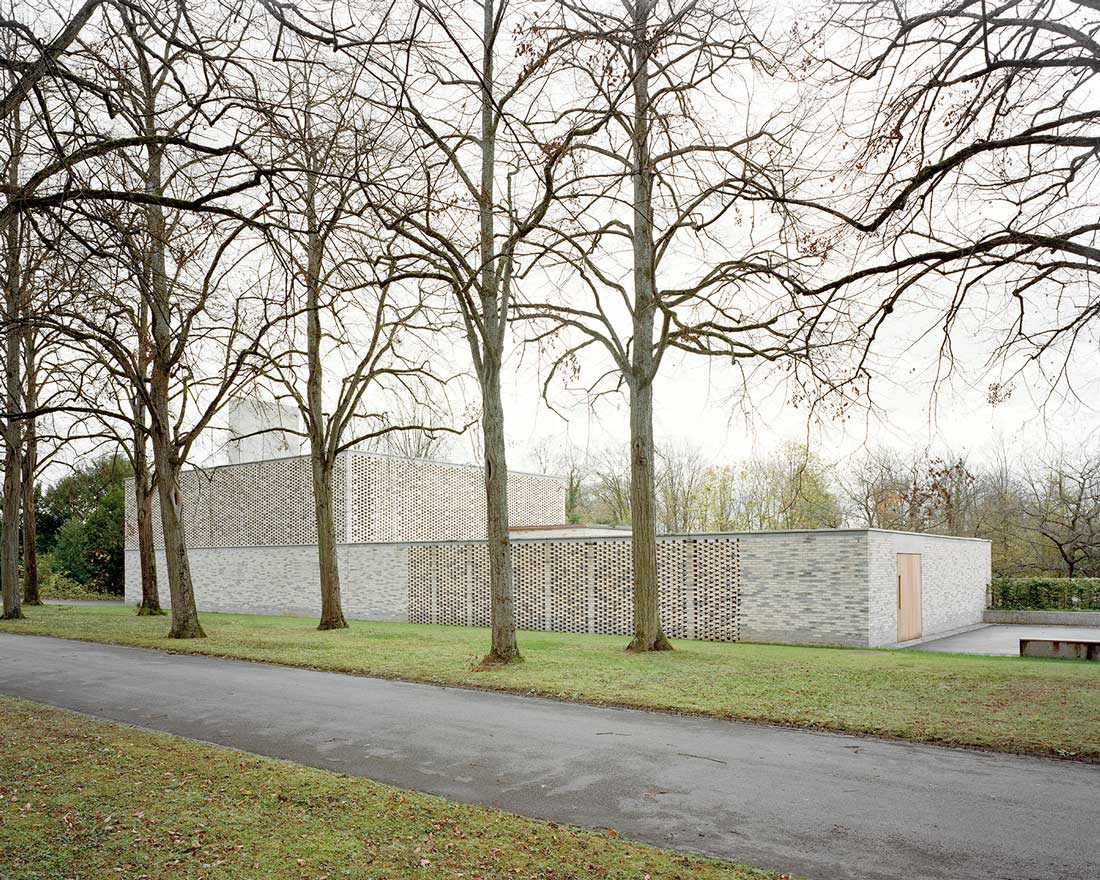 Following the main alley, the building appears as an independent volume in line with the existing mortuary building. A new entrance court forms a mediating space between the existing and new structures. From there, you enter an enclosed courtyard providing an intimate, semi-public space only accessible to the respective mourners, creating a slow approach to the final act.
Following the main alley, the building appears as an independent volume in line with the existing mortuary building. A new entrance court forms a mediating space between the existing and new structures. From there, you enter an enclosed courtyard providing an intimate, semi-public space only accessible to the respective mourners, creating a slow approach to the final act.
This sequence of spaces ending in the cremation room is followed by a volumetric development in height. The building rises step by step from the lowest level of the entrance until its highest part, the free-standing chimney. This movements guide the families by creating a succession of spaces that ends with the building’s one big open window onto the sky.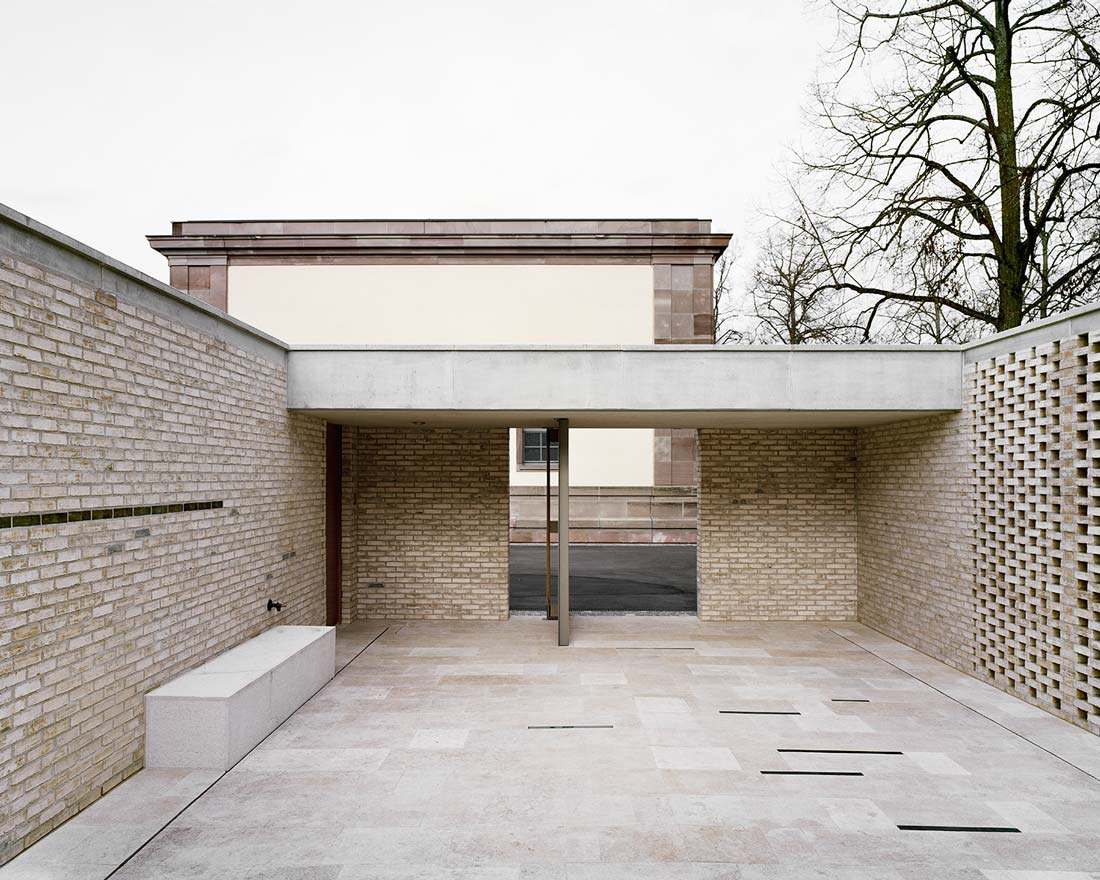
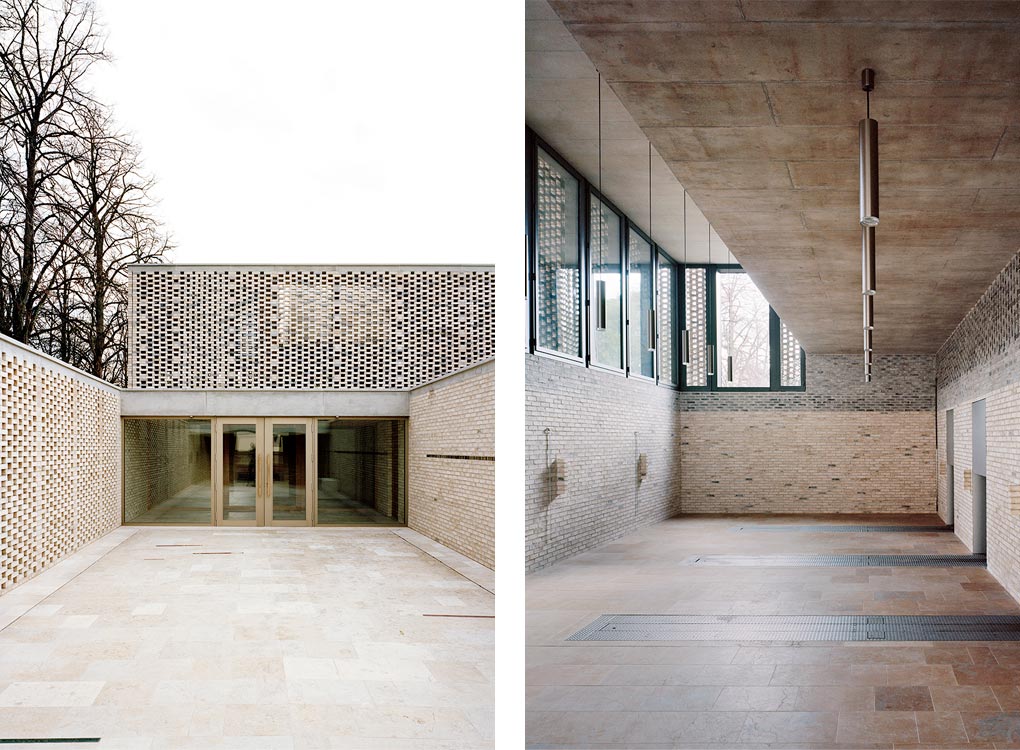 Furthermore, the new crematory is characterized by the image of simultaneity: the industrial process of incineration and the emotional exception of mourning. This translates into a building with a concrete structure and a brick skin. Concrete is a rough, industrial product, whereas brick is a hand-made and hand-laid material. The latter stretches around the building and opens to light and air, defining a porous border that is open and closed at the same time.
Furthermore, the new crematory is characterized by the image of simultaneity: the industrial process of incineration and the emotional exception of mourning. This translates into a building with a concrete structure and a brick skin. Concrete is a rough, industrial product, whereas brick is a hand-made and hand-laid material. The latter stretches around the building and opens to light and air, defining a porous border that is open and closed at the same time.